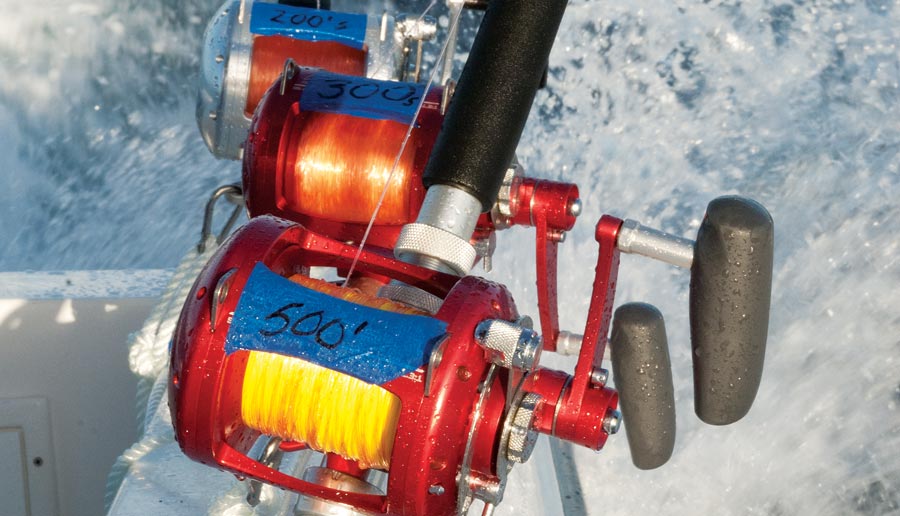
Ultrahigh molecular-weight polyethylene — the generic name for both Honeywell Spectra and DSM Dyneema fiber — has been used to make thin, strong fishing line for two decades. “Braid gives you greater capacity, more strength, better longevity and increases versatility,” says Bryce Poyer, owner of White Water Outfitters on eastern Long Island, New York. “If you change monofilament like you should, braid backing saves money over time.” To learn Poyer’s nine strategies for backing fishing reels with braid, I spent a day at his shop.
Consider Spool Capacity Versus Line Strength
Braid is about four times stronger than monofilament line of the same diameter. But for a given breaking strength, monofilament is a little more than twice the diameter of braid. Why the unequal relationship? As the diameter doubles, the total area of the cross section of that line increases fourfold — and so does its strength. Ande Premium 10-pound monofilament is exactly half the diameter of Ande 40-pound monofilament, for example.
But Poyer says those calculations won’t solve real-world equations. “There’s not much sense in putting 200-pound backing under 50-pound mono, with zero gain in reel capacity, but you also want to have faith in that braid for years down the road. Go at least one line class heavier than your monofilament top shot,” Poyer says, meaning at least 50-pound braid under 30-pound monofilament or 80 braid under 50 monofilament. “If you don’t need the line capacity, go up two classes.”
Calculate the Numbers
Divide the monofilament diameter by the braid diameter to come up with a conversion — 60-pound Ande monofilament is 0.031 inches thick, divided by 100-pound Western Filament Tuf Line XP braid at 0.019 inches thick. That comes to 1.63 yards of 100 Tuf Line to replace every yard of 60 Ande. My Avet 50-wides hold 700 yards of 60-pound monofilament. I want to keep a 200-yard monofilament top shot, so I should need about 815 yards of braid beneath that top shot.
But that’s just an estimate. “It comes down to trial and error,” Poyer says. “You’ve just got to do it once to learn what it takes.” My 50s worked out about right with 800 yards of solid-core braid and 200 yards of mono. But crunching the numbers on my Avet 30-wides suggested 441 yards of 80-pound hollow Tuf Line Guide’s Choice braid. They actually took 500 yards.
Understand Fronting
“Guys fishing all braid might want heavier Spectra on top, where it takes the abuse, but then splice in lighter braid underneath for reel capacity,” Poyer says. “At the end of the fight, when that heavier braid is on their reel, they can increase their drag.
“Inshore, it’s the polar opposite. We put braid on the top of the reel to fish with and back it with disposable mono,” Poyer says. “But whatever braid you think you need, double it. If you get hung up on a wreck and have to cut back, you’ll still have plenty.”
Spool Your Braid Carefully
Poyer is meticulous when filling spools, and for good reason. “About a third of the reels that come in with complaints about the drag turn out to be caused by line revolving on the spool arbor,” he says. One wrap around the arbor with electrical tape gives slippery braid plenty of traction. Three wraps around the arbor and a uni-knot secures the braid. Poyer then lays the first layer of braid neatly atop the tape.
Tension while spooling backing is critical so the braid can’t cut down into the line beneath it and bind when a fish takes a hard run. Poyer sets his line spooler to about one-half the drag his customer intends to fish. Others suggest 10 percent of the braid’s labeled strength.
Without a spooler, fill one reel snugly with braid, and then set its drag and transfer the braid to another reel. A smaller reel should hold enough braid to back a larger one.
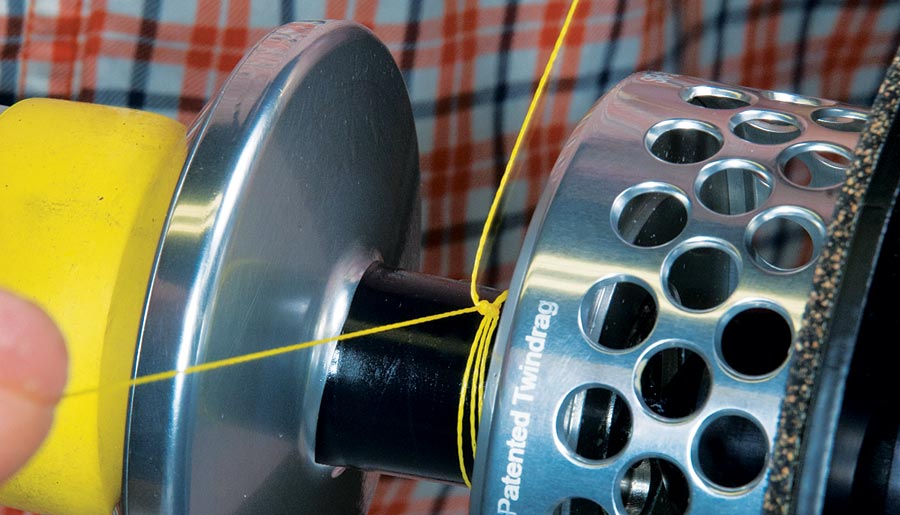
Perfect Braid-Backing End Loops
Solid braid backing gets a Bimini twist. Poyer splices hollow-braid backing using DaHo needles and the inside-out loop splice illustrated well on its website. In either case, make the loop large enough to pass the top-shot monofilament spool through to make a cat’s-paw connection later.
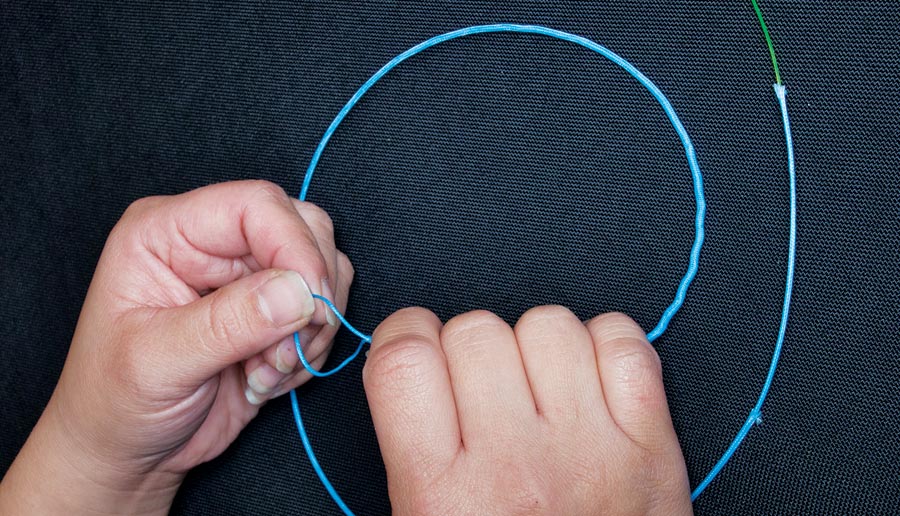
Connect the Monofilament
Poyer splices the monofilament top shot to a hollow-braid spliced loop as is common for wind-on leaders. He serves that junction with 3 inches of light braid — about half the breaking strength of the braid backing. Hollow or solid doesn’t matter, but Poyer prefers white to serve with, which doesn’t have waxy coatings of colored fishing line.
“You can splice the monofilament directly to the hollow-braid backing,” Poyer says. “That’s a cleaner connection that casts well on spinners, but the downside is it’s harder to change the top shot on the boat.” He suggests storing complete top shots — including spliced- and served-braid loops — on yo-yos for quick changes.
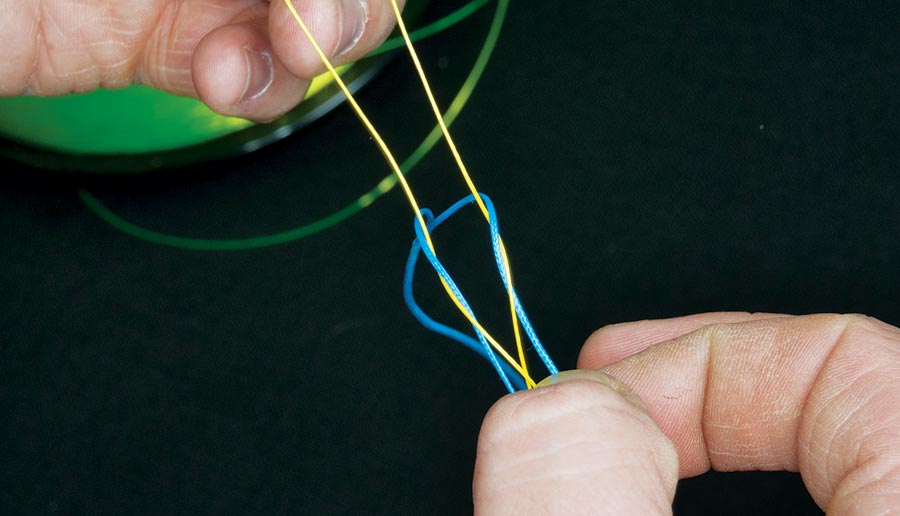
Save Money
Braid backing pays for itself after six or eight fresh top shots. Hollow-core braid costs more — as much as double for 80-pound braid and lighter, but only about 25 percent more for 100-pound and above. “If you break off or need to cut back hollow-core braid, you can splice on more braid,” Poyer says. “It’s a very clean splice that’s 100 percent as strong as the braid.” When cost is the chief concern, consider 100-pound or heavier backing, which is made from thicker, less-expensive Spectra fibers.
Change Your Line
Manufacturers suggest braid will last at least four years. Poyer has no qualms with eight years when used beneath lighter monofilament, although he suggests an end-for-end flip every other year. “You might cut back the first bit and splice in more hollow braid or use a longer top shot to make up the difference,” he says.
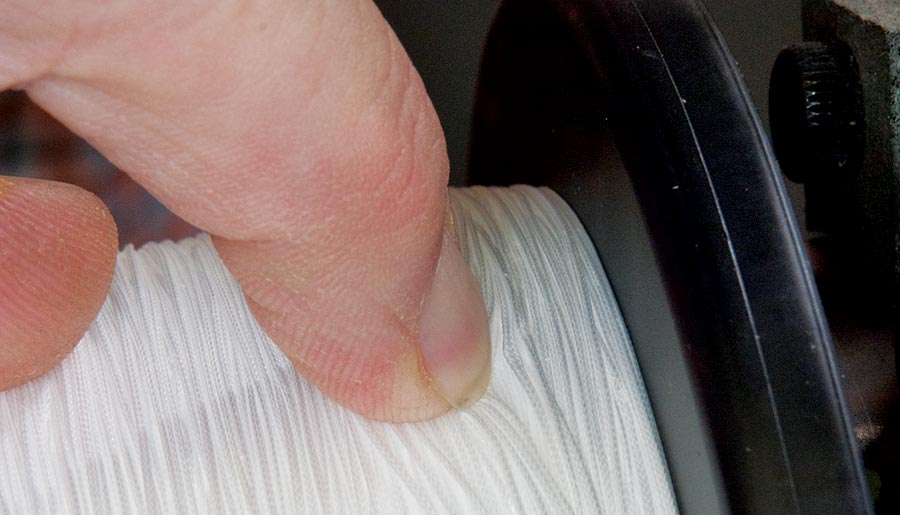
Monofilament Compaction
Spool distortion from monofilament compaction — the swelling of monofilament line wound tight under full drag and later relaxing — is supposed to be eliminated with braid backing. Not so, says Poyer. Last summer he saw more than 50 spools stretched. Many were backed with braid. “I think it’s that line coming off and going back on under tension. Each time it compacts a little tighter. If we’re getting into that backing often, maybe we should be end-for-ending that braid every year.”
Before spooling your reels this spring, consider braid backing. You’ll add versatility to your tackle and maybe save a few bucks too.
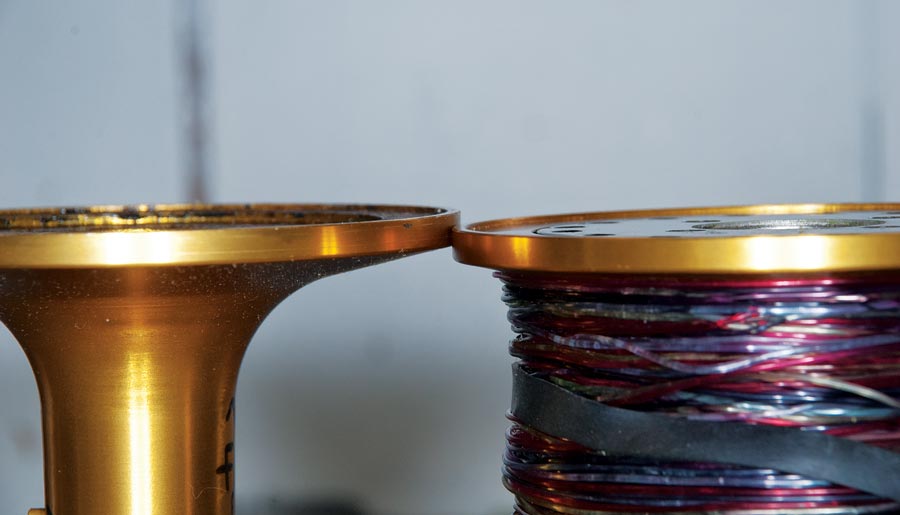
About the Expert:
Bryce Poyer grew up fishing with his grandfather off Long Island. He worked the deck on party boats through high school, and traveled from Maine down to Costa Rica as a mate. He sold wholesale tackle before opening White Water Outfitters in Hampton Bays, Long Island.








